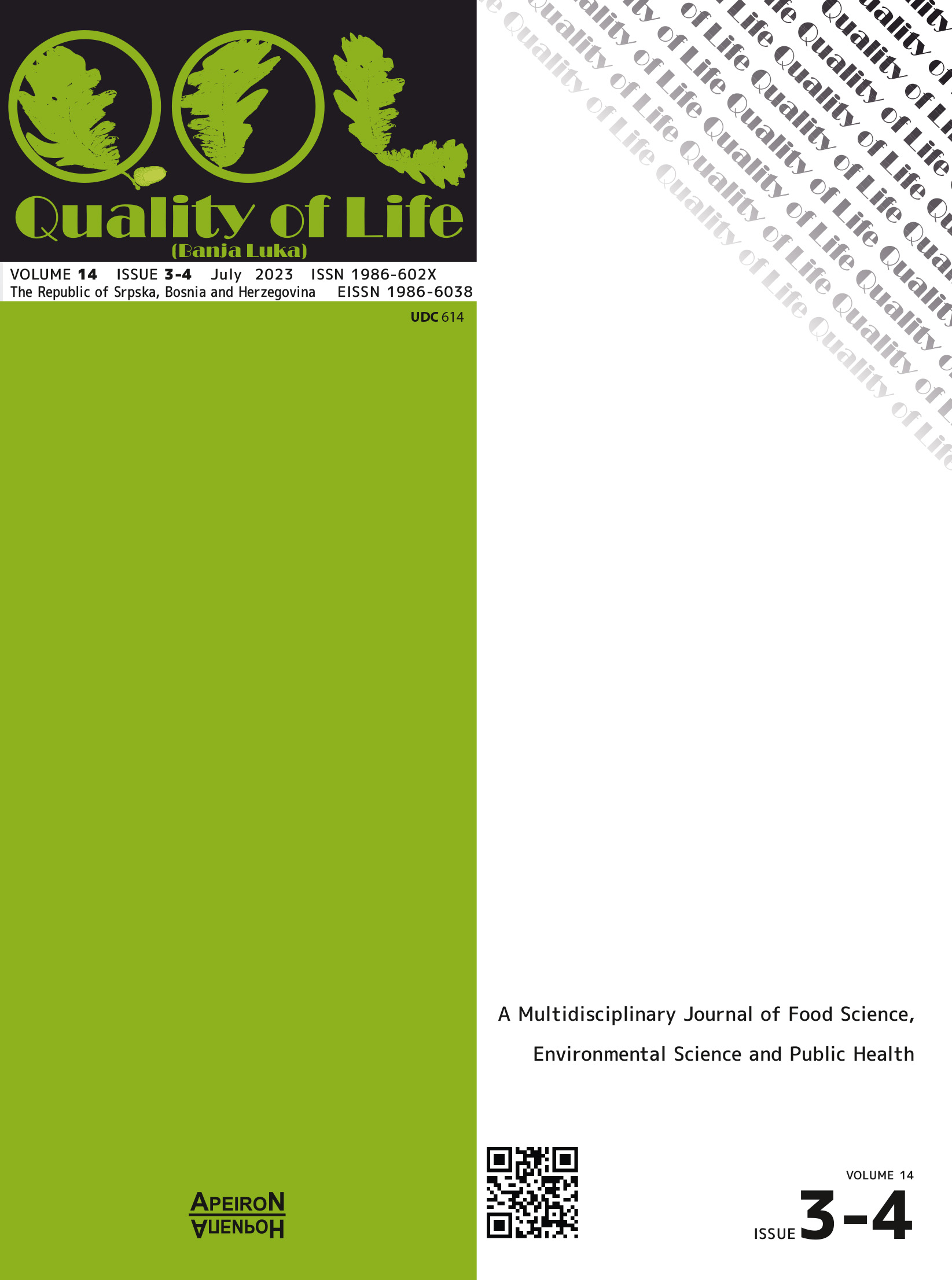Obesity as a Risc Factor for Diabetic Foot Ulcer
DOI:
https://doi.org/10.7251/QOL2303124DAbstract
Introduction: Diabetic foot is a term used to describe the foot of a diabetic patient with a potential risk for several pathological consequences, including infection, ulceration and/or destruction of deep tissues associated with neurological abnormalities and different degrees of peripheral vascular disease and/or metabolic complications of diabetes in lower extremities. Objective: To determine the relationship between body mass index (BMI) and the characteristics of diabetic foot ulcer, and to offer an answer to the question of whether and in what context obesity can be viewed as a risk factor for diabetic foot ulcer or as a predictor of treatment outcomes. Methods: The study was created as a prospective follow-up study, and the total sample contained 33 subjects. Subjects were adult patients of both sex that satisfied determined inclusion criteria. The consent of the competent ethics committee was also obtained. All data were entered into the MS Excel database, and further statistical processing was performed using SPSS 21 program. Statistically significant difference was noted if P≤0.05. Results: The key results of this study are the fact that no statistically significant correlation was found between the diameter and depth of the ulcer at first examination with BMI values (P = 0.865 and P = 0.137), as well as obesity expressed through BMI with the clinical outcome of diabetic foot ulcer treatment after 2 months (P = 0.448). Conclusion: There is no proven statistical relationship between diameter and depth of ulcers with BMI, nor the influence of BMI on the clinical outcome of diabetic foot ulcer treatment.
